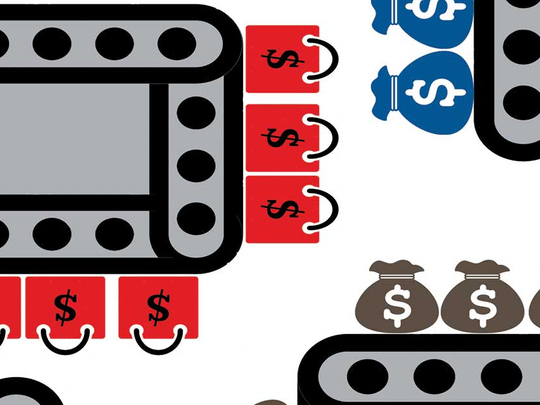
A recent report by S&P stated that there appeared to have been no improvement in the real estate market, and that the strong dollar had contributed to the weakness of the market.
Whilst they did not see much possibility of a prolonged decline, equally they did not see any visibility of improvement. Even as transactional activities in the first four months have risen by 11 per cent, led by a price rebound in certain areas, sentiment still remains circumspect. It is worthwhile examining the nature of sentiments and what that implies for the state of the real estate market in the months ahead, both regionally as well as globally.
With more than 25 countries in the developed world now having zero to negative interest rates (the number rises to over 50 when we look at real, as opposed to nominal interest rates), the concern has been that asset prices have been elevated due to monetary policy rather than underlying cashflow generation.
Furthermore, the quantitative easing programme has not been able to revive lending in the levels that economists have expected. Recent ECB data has revealed that the level of loans given to the private sector has essentially remained flat since early 2014, despite the huge amount of monetary stimulus that has been injected.
However, what this data fails to reveal is the rising amount of liquidity that is inherent in the banking system that remains available to channelise to the economy through fiscal policy stimuli – an initiative that has not yet materialised.
While it is clear that there is a logical limit to the amount of quantitative easing that can be injected into the economy (negative interest rates are already having the counterproductive impact of withdrawals combined with a surge in demand for safe deposit lockers for individuals to place cash), there remains considerable scope for fiscal policy tools to be utilised by way of increased government spending.
It is this very phenomenon of a proactive fiscal policy that is starting to be witnessed throughout the Middle East.
Even as all eyes remain on Saudi Arabia’s economic overhaul programme, it is worthwhile to note that Dubai has already stolen the march by announcing a budget that called for an increase in budgetary spending. Thereby, Dubai is utilising some of the surplus liquidity on the sidelines and counteract the contraction from lower oil prices and the downstream impact it has had in the form of job cuts, predominantly in the banking sector.
What we are witnessing is a re-allocation of resources, both in the private sector as it readjusts to an era of lower oil based spending into other consumer oriented areas of the economy, as well as in the government sector throughout the region, with infrastructure spending continuing to increase.
This will be done through a combination of fiscal reform (removal of subsidies as well as implementation of indirect taxes and possible immigration reform), which will automatically cause inflation to rise. In addition, the channelising of liquidity through increased investment in infrastructure will be funded through a combination of debt funding as well as SWF disinvestment programmes.
The galvanisation of these will sustain the job engine, thereby perpetuating the transition towards a domestic consumer oriented economy currently under way. Markets in the region have already started anticipating this, with equity markets bouncing off their lows throughout the region, led by Dubai.
More specifically, in the real estate sector, transaction levels have started to rise, and has been led by the end user, even as investors for the most part remain on the sidelines. It is a phenomenon likely to change in the course of the next few months as investors gain increasing confidence in the visibility of the fiscal spending programme.
In the light of dollar declines (which was the main reason highlighted in the negative commentary), reports like the ones issued by S&P therefore appear to be a widespread example of “contagious stories of wide significance”, a common theme of major recessions.
It is of course difficult for investors to forget the traumatic experience of major crashes. And therefore attractive valuation criteria led by a macro tectonic shift is ignored, preventing investors from curating their investment allocation decisions.
Dubai has already demonstrated that the heavy lifting is now essentially a fiscal policy construct. With the region now following suit, it is inevitable that this increased spending profile will not only counter the headwinds of deflation, but will lead to a gradual increase in asset prices.
Investors will discern the winds of change and start to allocate to assets where the decline has been overdone.
The writer is the Managing Director of Global Capital Partners.












